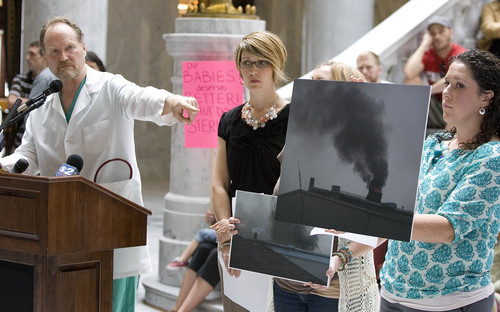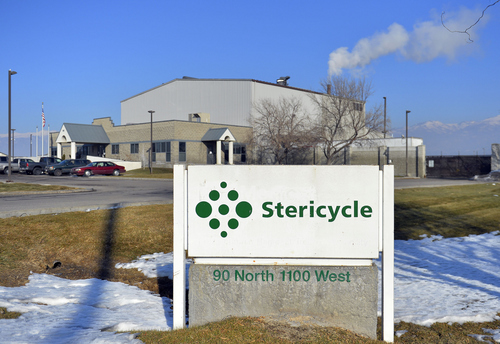This is an archived article that was published on sltrib.com in 2014, and information in the article may be outdated. It is provided only for personal research purposes and may not be reprinted.
There are elevated rates of some types of cancer in the communities that surround the Stericycle medical-waste incinerator, the Utah Department of Health has found.
But health officials said the findings are not cause for alarm and may simply reflect random variation that epidemiologists often encounter. The study cannot link the cancer patterns to specific environmental exposures.
The study looked at rates of 42 types of cancer between 1976 and 2011, the last year data was available. It found elevated rates of six cancers — colon, anus, bone and joint, cutaneous melanoma, breast and prostate — for the 2006-11 period.
"The elevated rates are very small compared to the background. That could be chance alone," said state epidemiologist Allyn Nakashima.
"These cancers are all highly preventable through lifestyle choices and regular health screenings," Nakashima added. "No links to air, water, or soil have ever been established for these types of cancer."
Gov. Gary Herbert ordered a multi-faceted investigation into possible health impacts associated with the Stericycle incinerator, which now abuts the new Foxboro neighborhood, after the state Division of Air Quality alleged the incinerator's emissions breached the limits set in its permit.
Activists have urged the governor to close the plant, which is allowed to emit each year up to 9.5 tons of hazardous pollutants, including mercury and lead.
The Illinois-based company, which is formally contesting the state's notice of violation, is now working out a deal to move the North Salt Lake incinerator 30 miles west to a remote part of Tooele County.
Stericycle critics were hardly impressed with the new findings, arguing that there are non-cancer health impacts that could be attributed to exposure to dioxin and other toxic emissions coming from the incinerator.
Of particular concern to activists are impacts to unborn children. A European study, for example, found mothers living near incinerators were 30 percent more likely to deliver premature babies, according to Brian Moench, president of Utah Physicians for a Healthy Environment.
He also rejected the state's assertion that the cancers identified in the study are not associated with pollution or other environmental exposure.
"To look at this and say there is no risk, that is an inappropriate conclusion," he said. "In our view that doesn't change the argument at all."
The new epidemiological study tapped the Utah Cancer Registry, which maintains data on all reportable cancer cases back to 1976. Environmental epidemiologist Sam Lefevre analyzed data associated with cancers among people who lived close to the current location of the incinerator, which came on line in the early 1990s. The study area included portions of five cities — North Salt Lake, Bountiful, West Bountiful, Centerville and Woods Cross.
He broke the 36-year study period into six six-year periods, including some that predate the incinerator, to see if any patterns emerged.
"This methodology doesn't look at cause, it strictly looks at whether the [cancer] rates of a community are higher or lower based on the state rate," he said.
The study could not determine whether the elevated rates are the beginning of cancer clusters, or a product of random variation in the data.
"I'm certain we will follow up in three to five years. I call them red flags," said Lewis Garrett, director of the Davis County Health Department. "We will look at them again when we have the data."
Moench objected to the study's control group, which was the state as a whole. Most Utahns live on the Wasatch Front and could be exposed to Stericycle's emissions, he said.
"This is not just an issue for Foxboro or just south Davis County," he said.
He also noted anecdotal evidence of what appears to be a cancer cluster in Davis County for a type of leukemia that appears mostly in children. The nation records about two new cases a year of acute lymphoblastic leukemia per 100,000 residents. Yet Moench said he knows of three cases in families in the activist community, which he said numbers about 1,500 people.
Under the governor's orders, the state health department is also testing soil samples and conducting a statistical investigation of adverse birth outcomes in southern Davis County.
A preliminary report, based on 10-year-old soil samples, found scant traces of dioxins, one of Stericycle's pollutants causing the most concern. However, the health department has gathered fresh samples from six spots near the incinerator and expects to release its findings soon. — —
Learn more about Utah's air
See The Salt Lake Tribune's continuing air quality coverage at http://www.sltrib.com/topics/UtahAQ.





